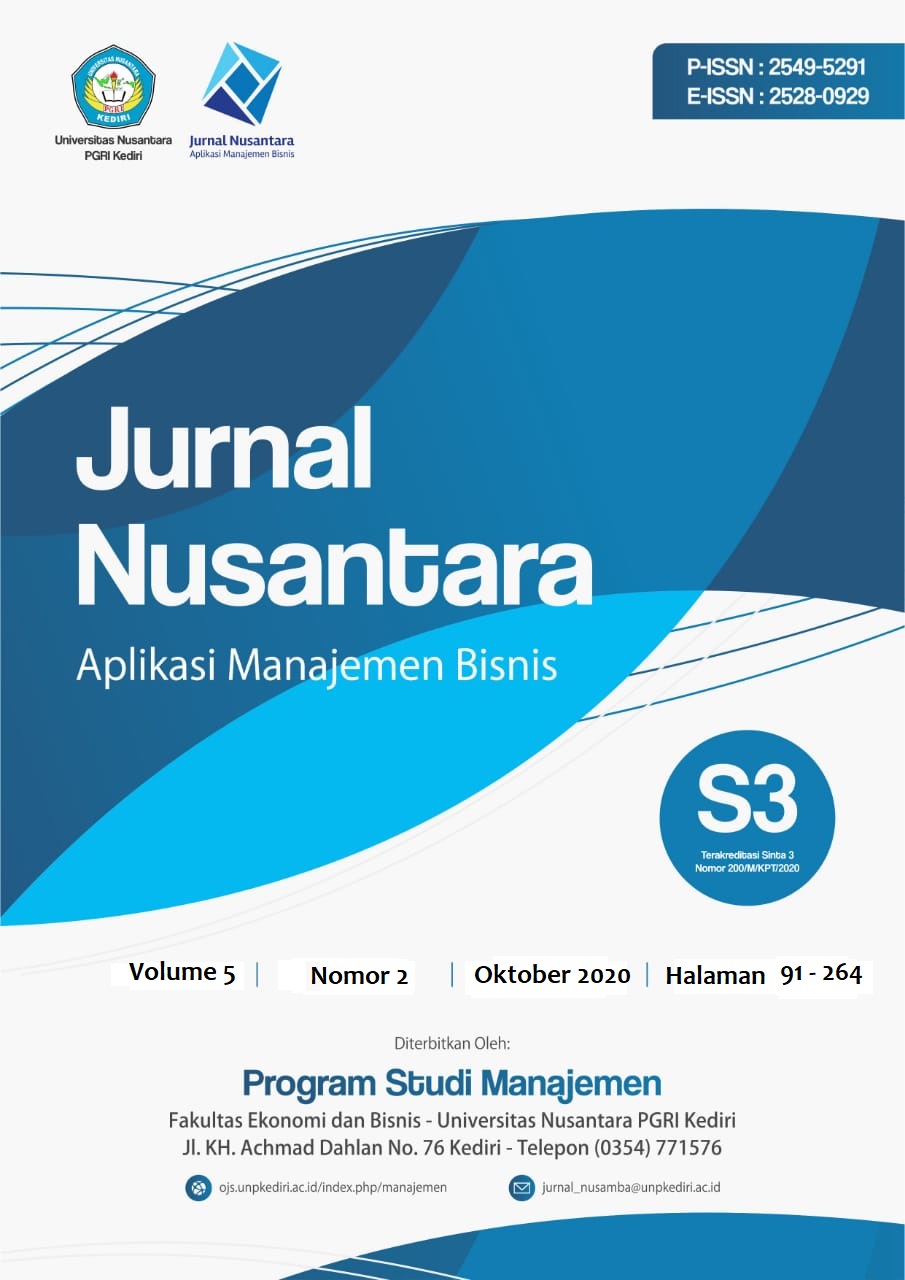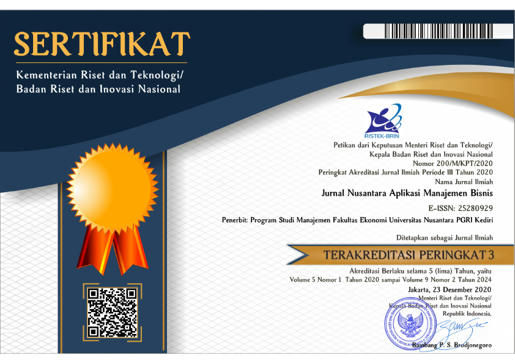Forecasting Demand Produk Batik Di Tengah Pandemi Covid-19 Studi Pada Usaha Batik Fendy, Klaten
DOI:
https://doi.org/10.29407/nusamba.v5i2.14441Keywords:
Linear Exponential Smoothing, Produk Batik, Peramalan PermintaanAbstract
The objectives of this study are forecast the demand for batik cloth and batik clothing in May 2020 and analyze the accuracy of forecasting demand for batik cloth and batik clothing.
This research is a descriptive study with a quantitative approach. Using data by interviews with Batik Fendy Business Managers and actual sales data from November 2019 to April 2020. There are two stages of data analysis that is calculating demand forecasting of batik cloth and batik clothing for May 2020 with the Linear Exponential Smoothing method uses a combination of α 0,8 / β 0,1 and α 0,9 / β 0,2 constant. While the second stage is to analyze the accuracy of the method of demand forecasting using the MAPE Technique.
The results of this study are for batik cloth products, predicted sales demand for May 2020 is 316 pieces with 30% MAPE. As for the batik clothing forecasting demand for May 2020 is 432 pieces with a MAPE of 19,8%.
Downloads
References
Gunaryati, A., Andryana, S., & Kasyfi, F. (2019). Perbandingan Metode Peramalan Eksponensial Smoothing dan Metode Jaringan Syaraf Tiruan Propagasi Balik untuk Data Pengguna Pita Lebar (Broadband) di Indonesia. Jurnal Sistem Informasi, Teknologi Informatika Dan Komputer, 8(February), 81–89. https://doi.org/10.24853/justit.8.2.81-89
Heizer, J., Render, B., & Munson, C. (2017). Principles of Operations Management; Sustainability and Suply Chain Management. In Principles of Operations Management.
Indah, D. R., & Rahmadani, E. (2018). Sistem Forecasting Perencanaan Produksi dengan Metode Single Eksponensial Smoothing pada Keripik Singkong Srikandi Di Kota Langsa. Jurnal Penelitian Ekonomi Akutansi (JENSI), 2(1), 10–18.
Kinasih, S., Agoestanto, A., & Sugiman. (2018). Optimasi Parameter pada Model Exponential Smoothing Menggunakan Metode. UNNES Journal of Mathematics, 7(1), 37–46.
Laksmana, R. D., Santoso, E., & Rahayudi, B. (2019). Prediksi Penjualan Roti Menggunakan Metode Exponential Smoothing ( Studi Kasus : Harum Bakery ). 3(5), 4933–4941.
Maricar, M. A. (2019). Analisa Perbandingan Nilai Akurasi Moving Average dan Exponential Smoothing untuk Sistem Peramalan Pendapatan pada Perusahaan XYZ. 13, 36–45.
Santoso, A. B., & Kusumajaya, R. A. (2019). Analisa Algoritma Exponential Smoothing Untuk Sistem Perencanaan Produksi Kain Batik Di Ukm Batik. 23–32.
Sherlia, Y., & Sugiono. (2017). Sistem Peramalan MEnggunakan Metode Exponential Smoothing dan Weght Moving Average di Perusahaan Konstruksi Telekomunikasi. Kovergensi, 13(2), 1689–1699. https://doi.org/10.1017/CBO9781107415324.004
Tistiawan, T. A., & Andini, T. D. (2019). Pemanfaatan Metode Triple Exponential Smoothing Dalam Peramalan Penjualan Pada Pt.Dinamika Daya Segara Malang. Jurnal Ilmiah Teknologi Informasi Asia, 13(1), 69. https://doi.org/10.32815/jitika.v13i1.345
Downloads
Published
Issue
Section
License
Authors who publish with this journal agree to the following terms:
- Copyright on any article is retained by the author(s).
- The author grants the journal, the right of first publication with the work simultaneously licensed under a Creative Commons Attribution License that allows others to share the work with an acknowledgment of the work’s authorship and initial publication in this journal.
- Authors are able to enter into separate, additional contractual arrangements for the non-exclusive distribution of the journal’s published version of the work (e.g., post it to an institutional repository or publish it in a book), with an acknowledgment of its initial publication in this journal.
- Authors are permitted and encouraged to post their work online (e.g., in institutional repositories or on their website) prior to and during the submission process, as it can lead to productive exchanges, as well as earlier and greater citation of published work.
- The article and any associated published material is distributed under the Creative Commons Attribution-ShareAlike 4.0 International License












